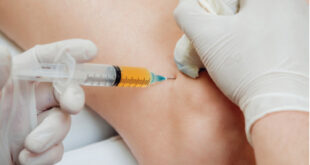by Enrique Hernandez-Sanchez, M.D. Pediatric Gastroenterologist
 Gastroesophageal reflux disease (GERD) occurs when gastric contents flow back into the esophagus, leading to complications such as inflammation of the esophagus, failure to gain weight, respiratory symptoms or choking. GERD is extremely prevalent among babies, with up to 20% incidence among full term babies and up to 40% incidence on premature babies.
Gastroesophageal reflux disease (GERD) occurs when gastric contents flow back into the esophagus, leading to complications such as inflammation of the esophagus, failure to gain weight, respiratory symptoms or choking. GERD is extremely prevalent among babies, with up to 20% incidence among full term babies and up to 40% incidence on premature babies.
With nearly four million births in 2011 in the United States, and a 12% prematurity rate, that translates into 900,000 new cases per year. This number does not account for what we call “happy spitters” or babies that thrive well and have no fussiness, but still have mild to moderate volume spit-ups that worry their caretakers enough to seek medical help.
“A baby that spits is a healthy baby,” your grandmother will tell you. However, recently we have made several associations between GERD and chronic respiratory illnesses such as asthma, hoarseness and chronic ear infections. These children may have absolutely no symptoms of acid reflux. Since babies do not come with an instruction manual, I want to give you some clues on the most common GERD symptoms.
Vomiting
An occasional teaspoon or two is normal, but if your baby is bringing up more than one tablespoon several times per day, they are losing plenty of calories that could impact their weight in the long run. Additionally, fluid dribbling is not the same as projectile vomiting. Your baby will likely get a contrast X-ray if he or she is having forceful emesis to rule out a blockage.
Overfeeding
Use this simple formula to calculate your baby’s maximum feeding volume: WT in Kilograms = maximum gastric volume. Then subtract 0.5-1 ounce, and you will have the maximum feeding volume. This formula works for up to 8 oz.
Fussiness
If your baby is fussier in the evening, your pediatrician will likely consider infantile colic. Fussiness as a main symptom may be an indication of GERD, but we should consider first Milk-Soy Protein Intolerance (MSPI), which usually creates fussiness 24-hours a day, and can be accompanied by eczema, cradle cap and a microscopic amount of blood in stools.
Arching
Not very specific, but when it occurs after meals it does suggest GERD. Its extreme form is called Sandifer’s Syndrome.
Feeding Refusal
It usually is a late symptom present in babies who have suffered from acid reflux for a while, and have made an association between pain and feedings. These children are called “sleeper-feeders” as they will eat better when they are half-asleep. A combination of medications is needed to reverse this symptom.
Straining
Associated with MSPI more than GERD, it may be caused by small nodules in the rectosigmoid due to allergies. These babies strain constantly, despite passing soft stools, which could have mucous or traces of blood.
Heartburn
Not every child with heartburn will suffer from GERD, since allergic esophagitis and Candida can mimic its symptoms. Heartburn evaluation will usually include an upper endoscopy.
Cough
As the esophagus grows it gets longer, and while gastric contents may not reach the mouth, they may reach the airway and cause micro-aspiration and damage to the larynx. Consider GERD if your child has chronic cough, has no allergies and is not getting better with antibiotics or asthma medications.
I hope this summary of symptoms will help you decode your child’s reflux blues, and remember to always consult your pediatrician before treating your baby for any condition.
Call Gastro Health at 888.476.4050 to schedule your screening.
www.gastrohealth.com
Check Also
The Mighty Maestro: Bob “Mighty Mite” Toski’s Enduring Legacy at 98
In the warm glow of a spring evening in Delray Beach, Florida, a remarkable celebration …
 South Florida Health and Wellness Magazine Health and Wellness Articles
South Florida Health and Wellness Magazine Health and Wellness Articles




